Medieval ship graffiti
/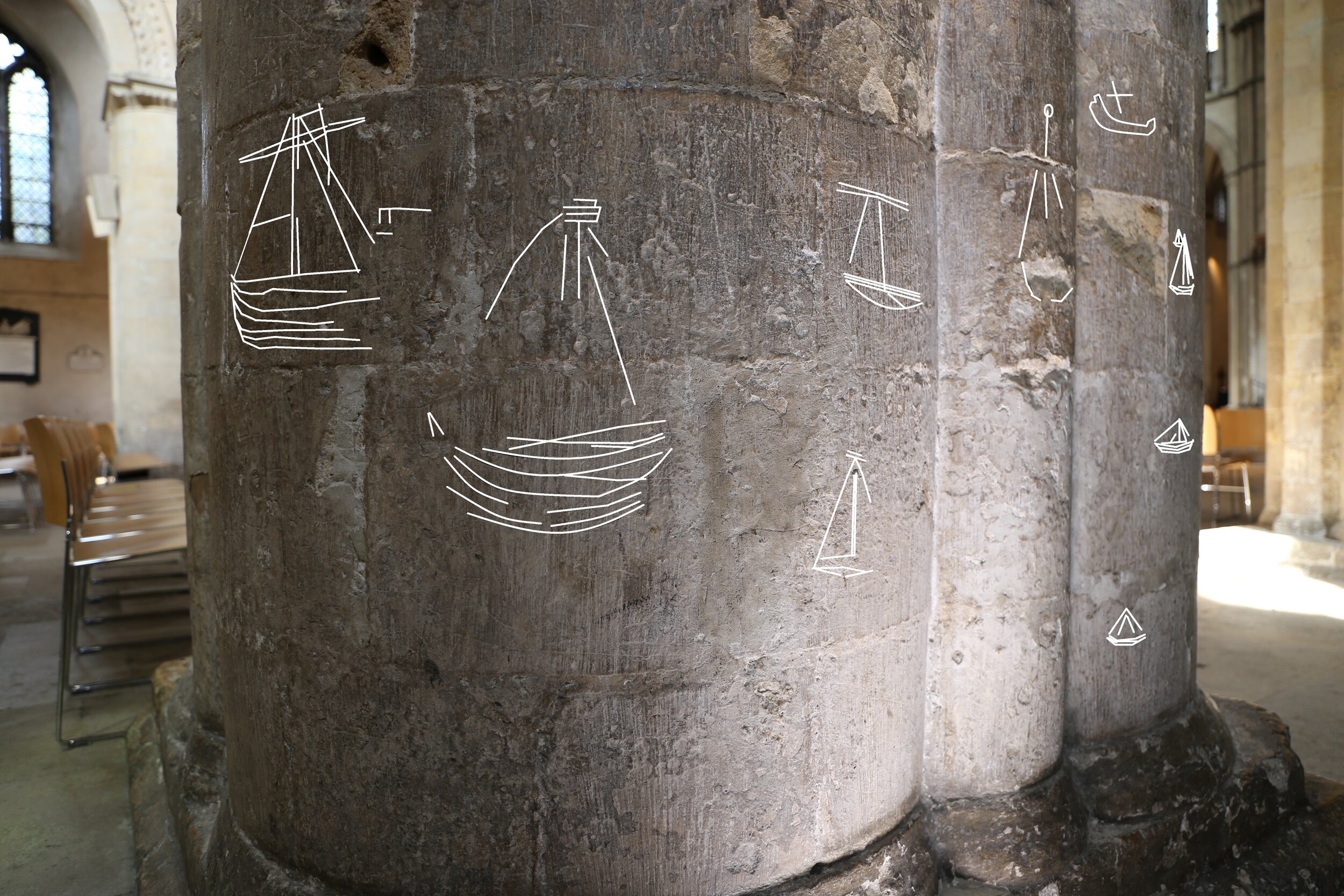
Medieval ship graffiti
September 30, 2021
Ships are of the few types of graffiti for which we have contemporary written records, detailing a colourful devotional ritual to St Nicholas, the patron saint of those in peril on the sea.
This survey has identified seventeen ship graffiti from 2 to 35cm in size. Twelve form a cluster on the fourth-west pier of the south nave arcade. Jones-Baker (1987) assessed the vessels depicted in this cluster as pre-fifteenth century.
Champion provides an overview of ship graffiti recorded around the country, many by the efforts of the Norfolk Medieval Graffiti Survey (Champion 2015b). Most examples, although not all, occur in coastal churches. Rochester’s seventeen examples reflects the proximity of the River Medway and the vital role that ships played in the local economy. The Diocese of Rochester also contains a long string of parishes on the Thames up to Deptford, a major shipbuilding place in medieval times. As elsewhere, Rochester’s ships are thought to have been created by passengers, crew members or captains within proximity to an altar, image or shrine dedicated to St Nicholas, the patron saint of those in peril on the sea (Champion 2015b, 347). At times of trouble on a sea voyage, such as a storm, a vow could be made to St Nicholas promising a votive offering in return for safe passage, sometimes in the form of a model ship of wax or wood. Some of these models survive in coastal churches and those in maritime settings, as at All Hallows-by-the-Tower.
The parishioners of St Nicholas occupied the nave of Rochester Cathedral until 1423 when a separate church was built to the north of the cathedral (St John Hope 1898, 286). All recorded ship graffiti on the fourth-west south nave arcade pier occur on its south side, perhaps indicating the temporary position of the altar or shrine to St Nicholas in the twelfth and early thirteenth centuries while reconstruction was carried out on the north arcade. However, the pier on which these examples occur provide one of the most prominent and workable surfaces in the nave due to its quatrefoil section and slowly curving surface, perhaps skewing the distribution of graffiti in this area.
One of the largest and most complete survivals in this cluster described as depicting an overhanging stern castle and single mast, with the yard and the parrel truck holding it the mast, and oblique line on the right interpreted as a mooring (Jones-Baker 1987, 15). For and aft stays and a bowline may also be depicted.
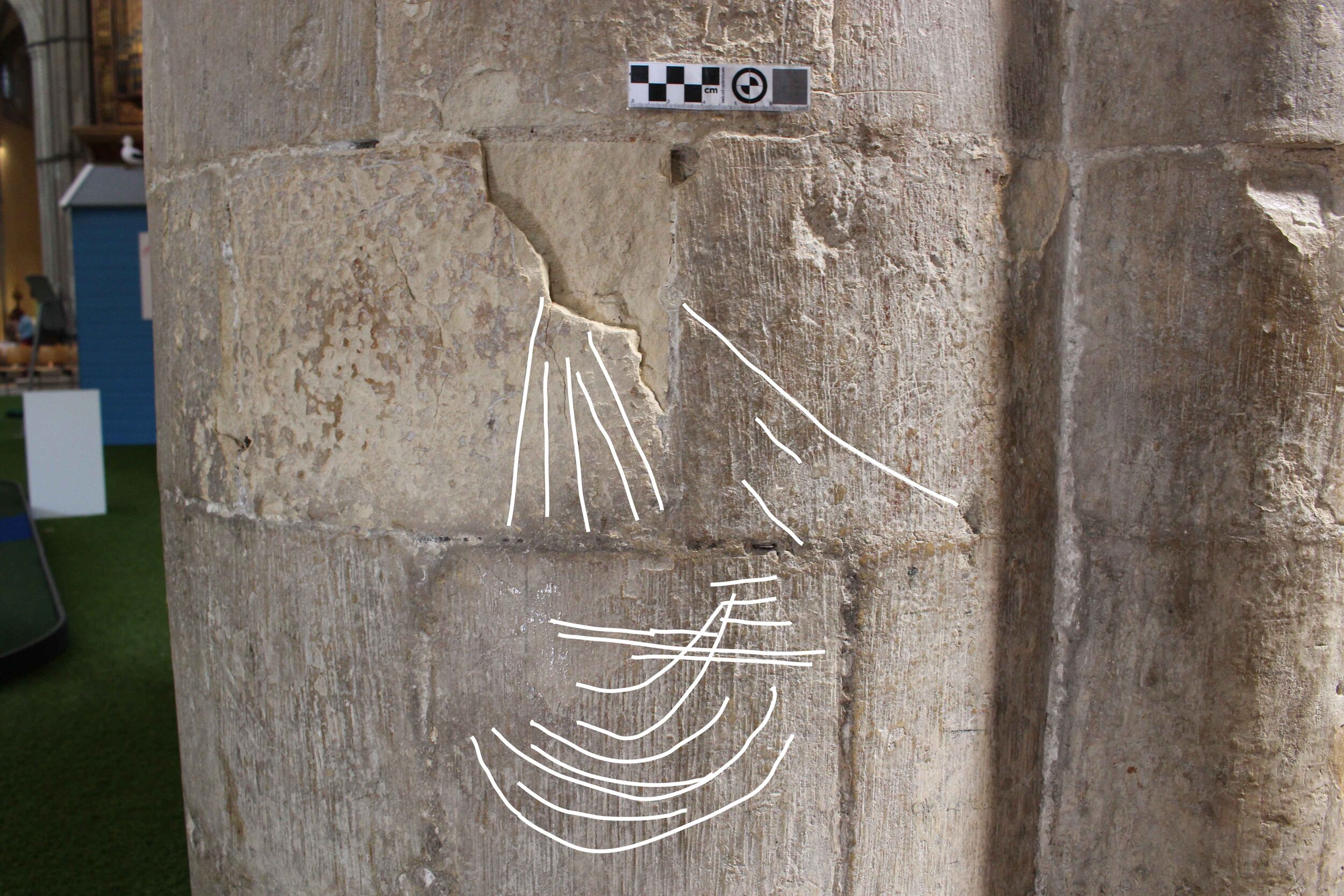

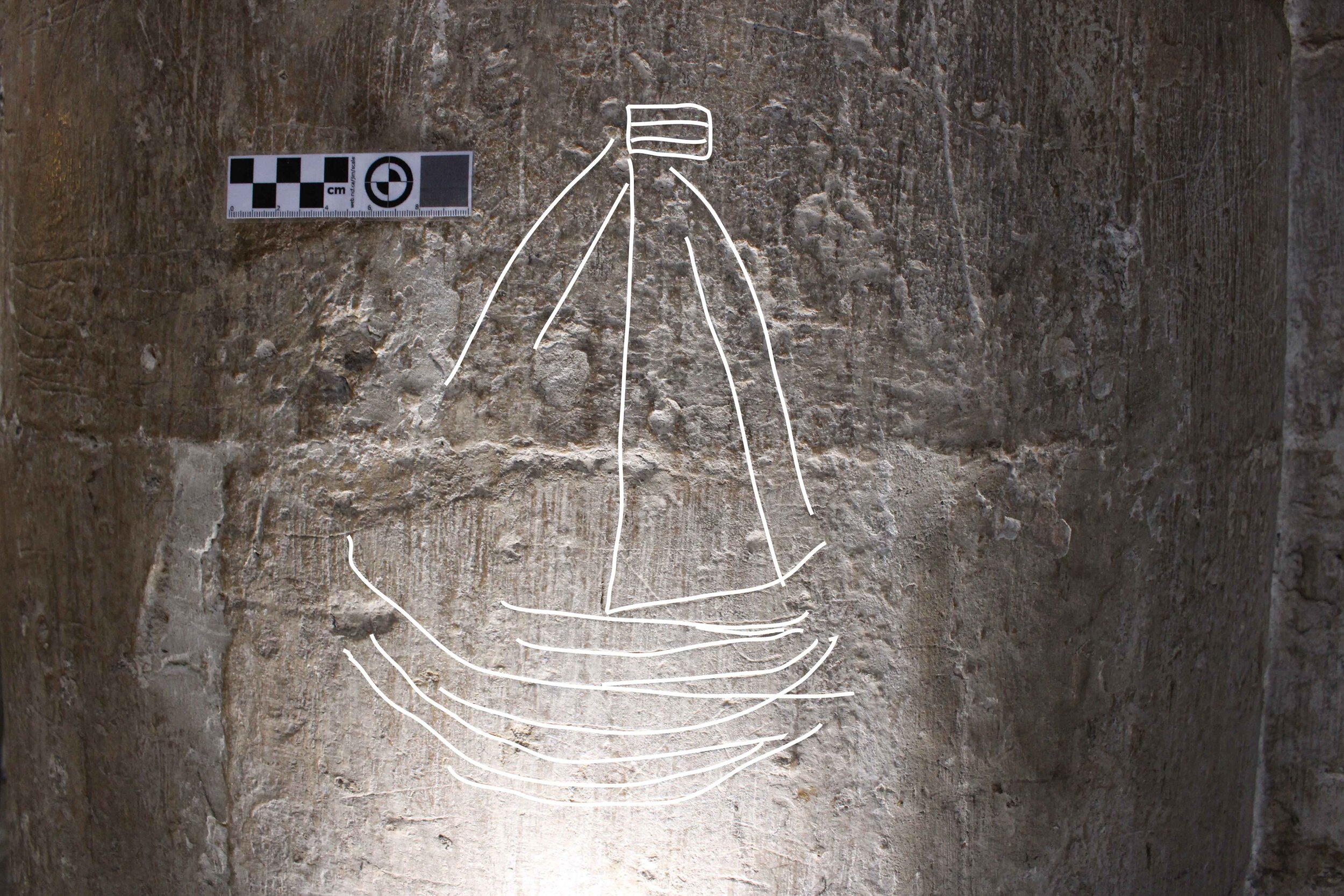
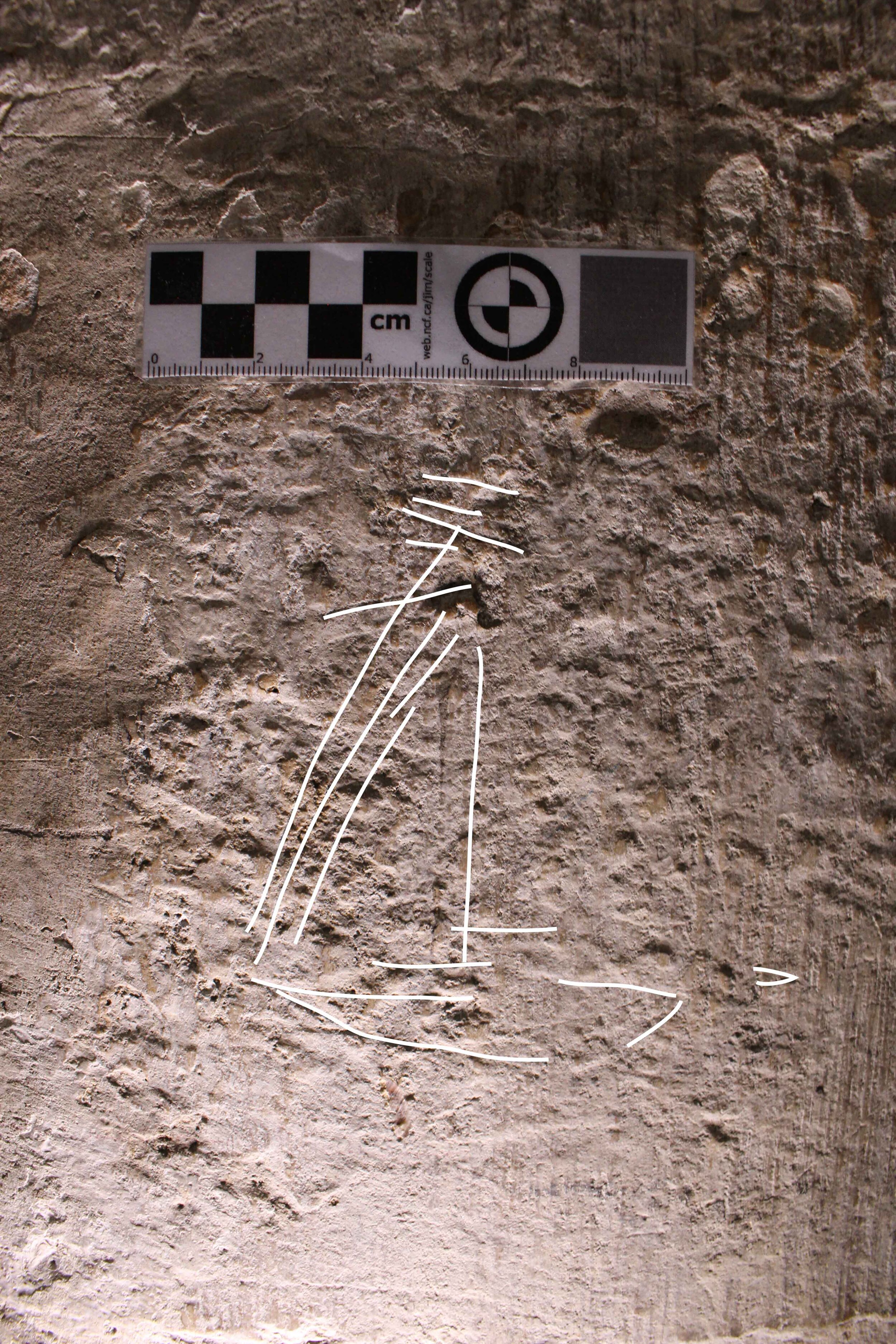

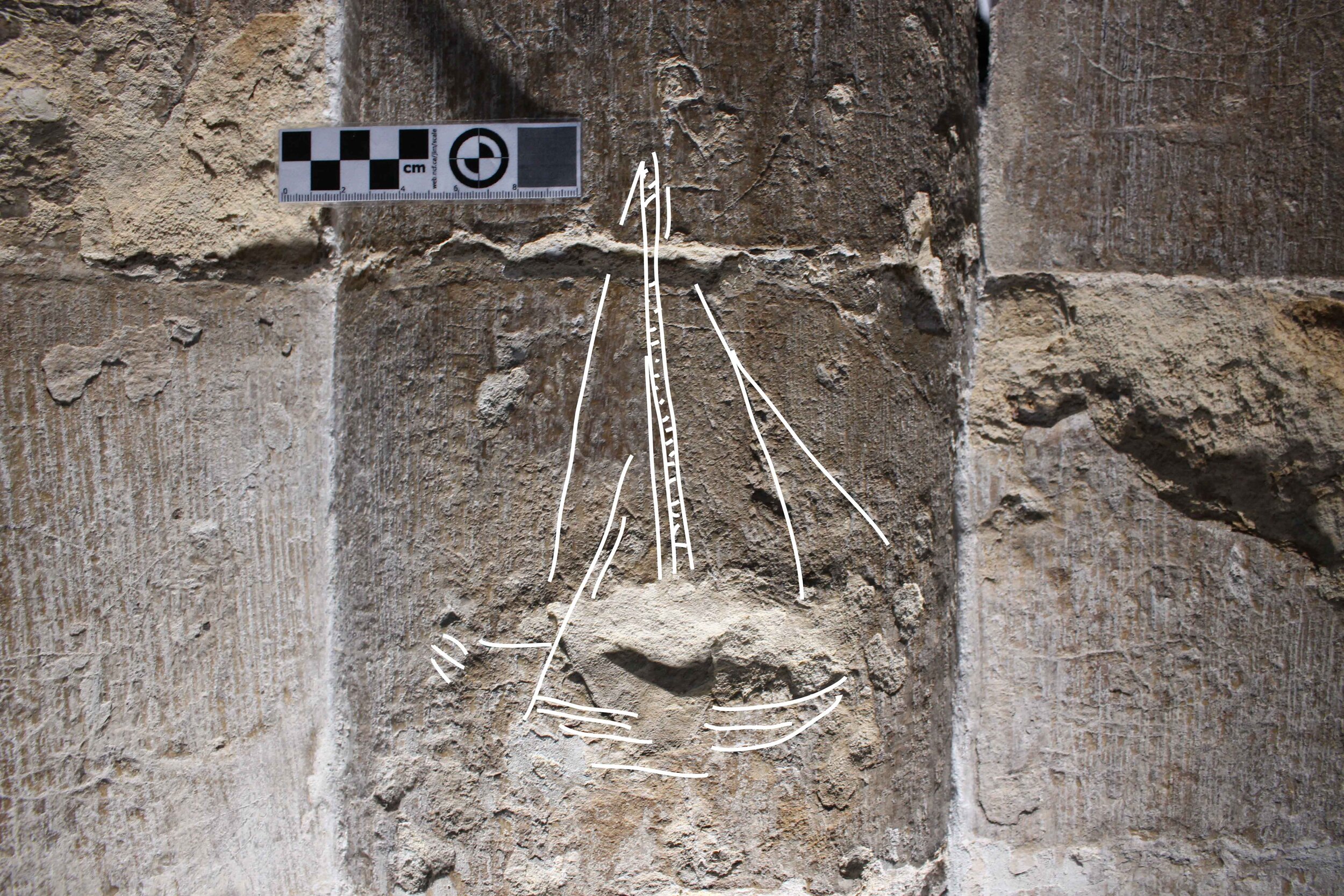

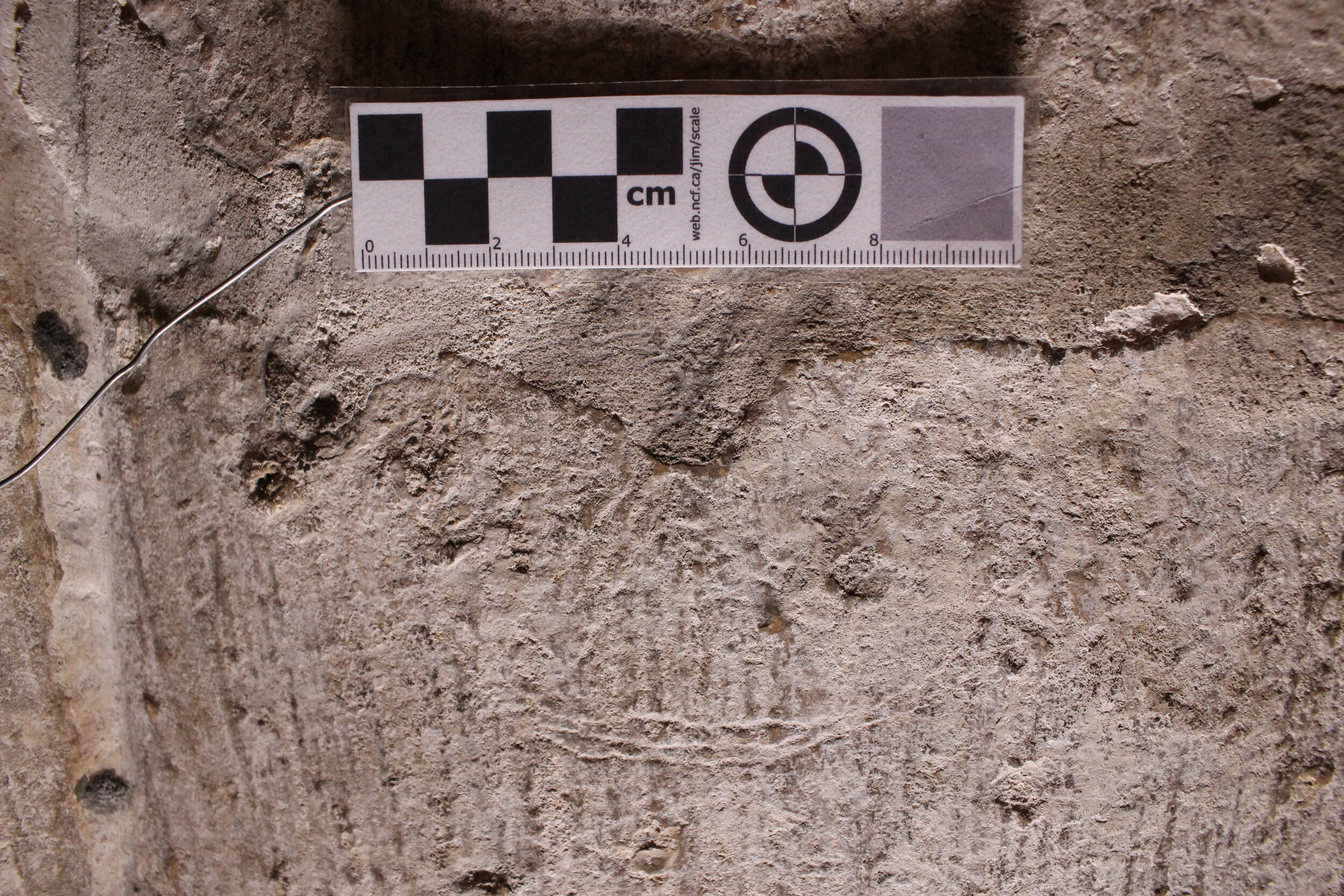
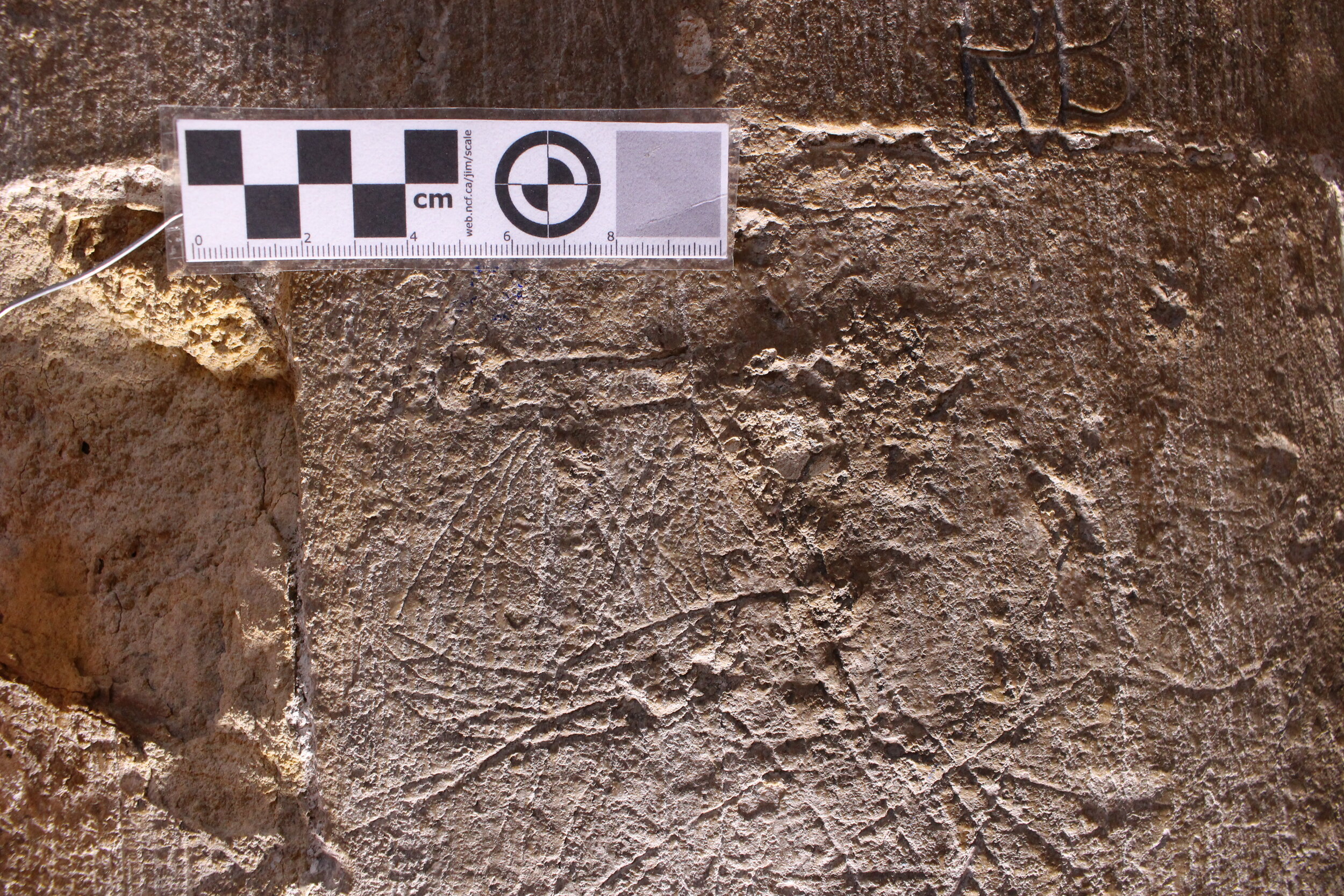
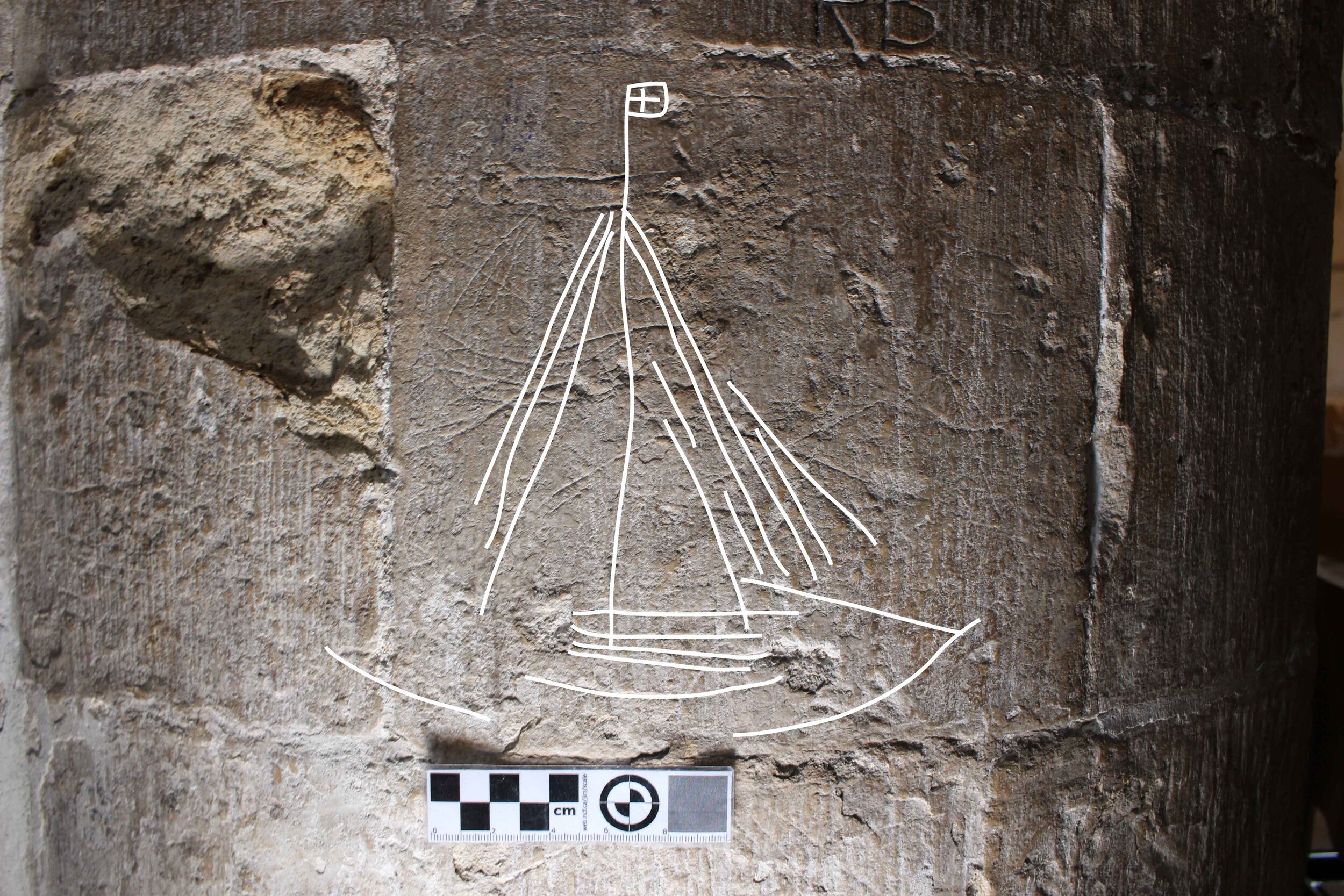
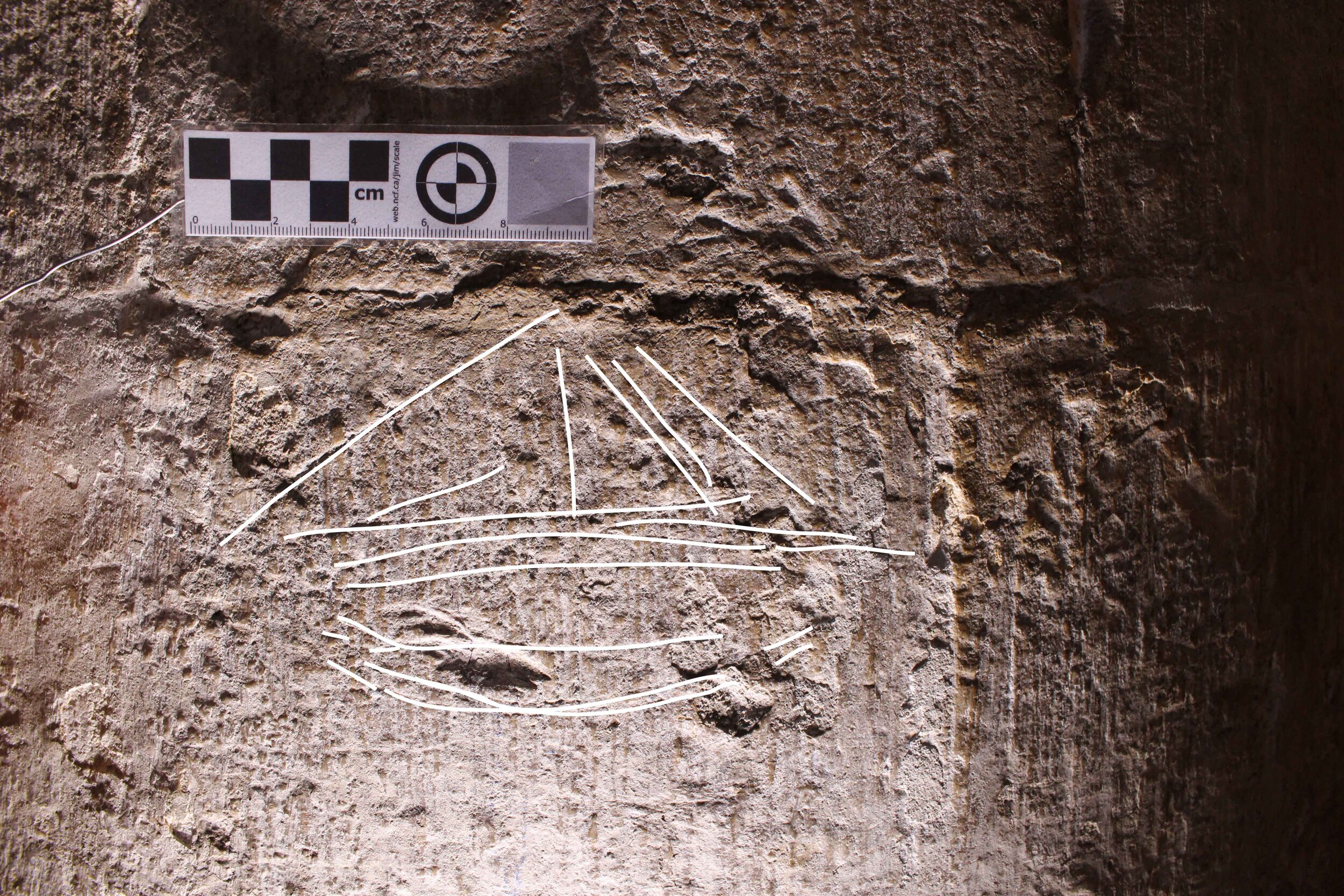
Twelve ship graffiti on the fourth-west pier in the south nave arcade.
An independent assessment by an Ian Friel of the National Maritime Museum, from a photograph supplied by Mrs L. A. Arnold in 1987, also highlights a possible stem post and bow spirit, although not the stern castle, illustrating the difficulties and ambiguities in assessing such designs remotely. Crows-nests and flags are occasionally depicted in other examples within this cluster. Many ships may be cartooned representations.
Two ship graffiti are now identified on the western gothic pier further east in the aisle. Much of these surfaces have been whitewashed or clumsily repaired with concrete. The ships on the fourth-west pier are perhaps only the best surviving portion of a wider sequence.
The height of these ships from the ground, from 44cm to 110cm, indicates their creation from a kneeling position. Church pews and benches were introduced to English churches in the fourteenth century, becoming commonplace in the fifteenth (Viola and Barna 2008, 35), although only for the wealthy until a much later date. The areas immediately surrounding earlier altars and shrines would have seen congregations and worshippers knelt, sat and even lying on the floor, providing a means of distinguishing earlier graffiti clusters of a ritual nature.
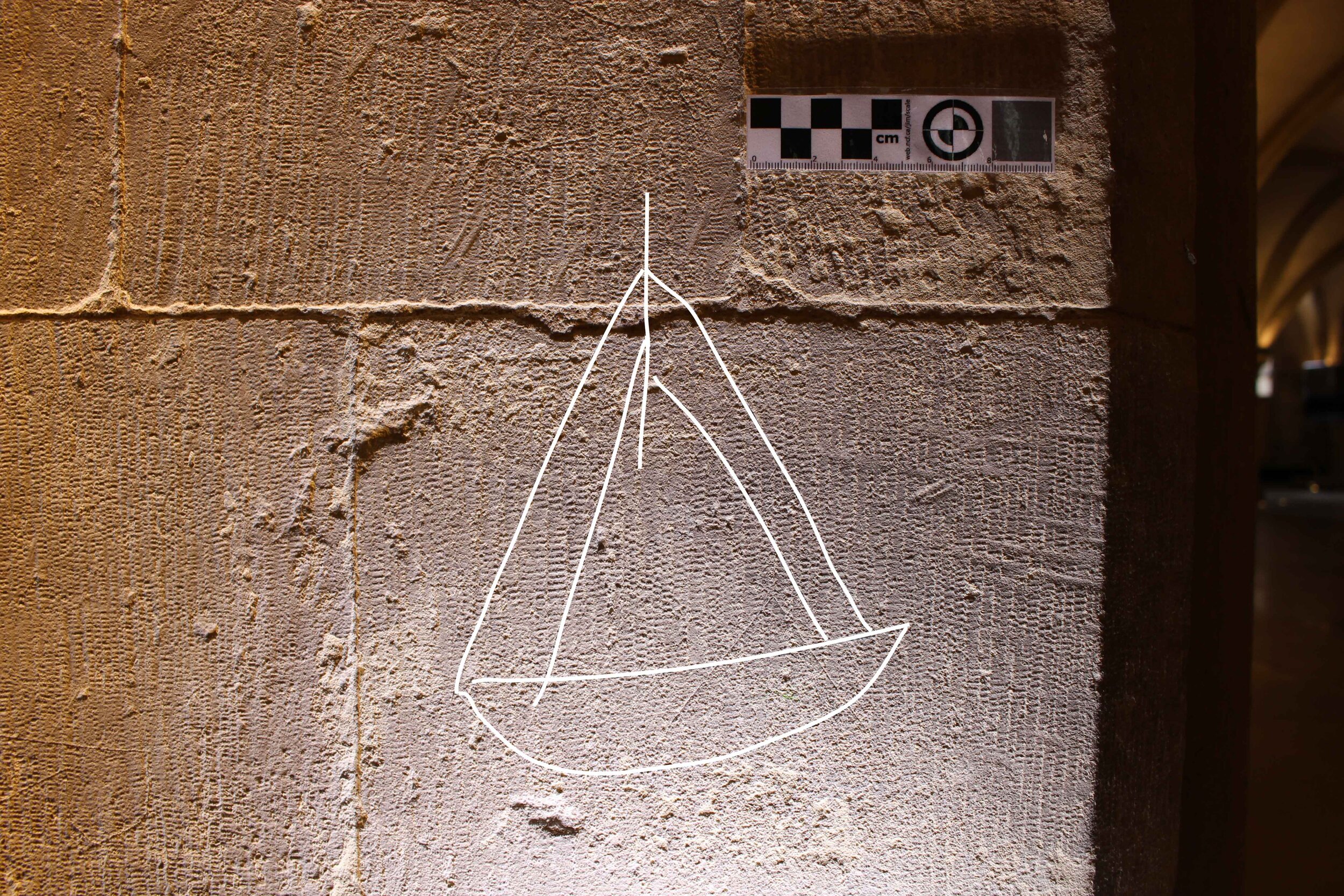
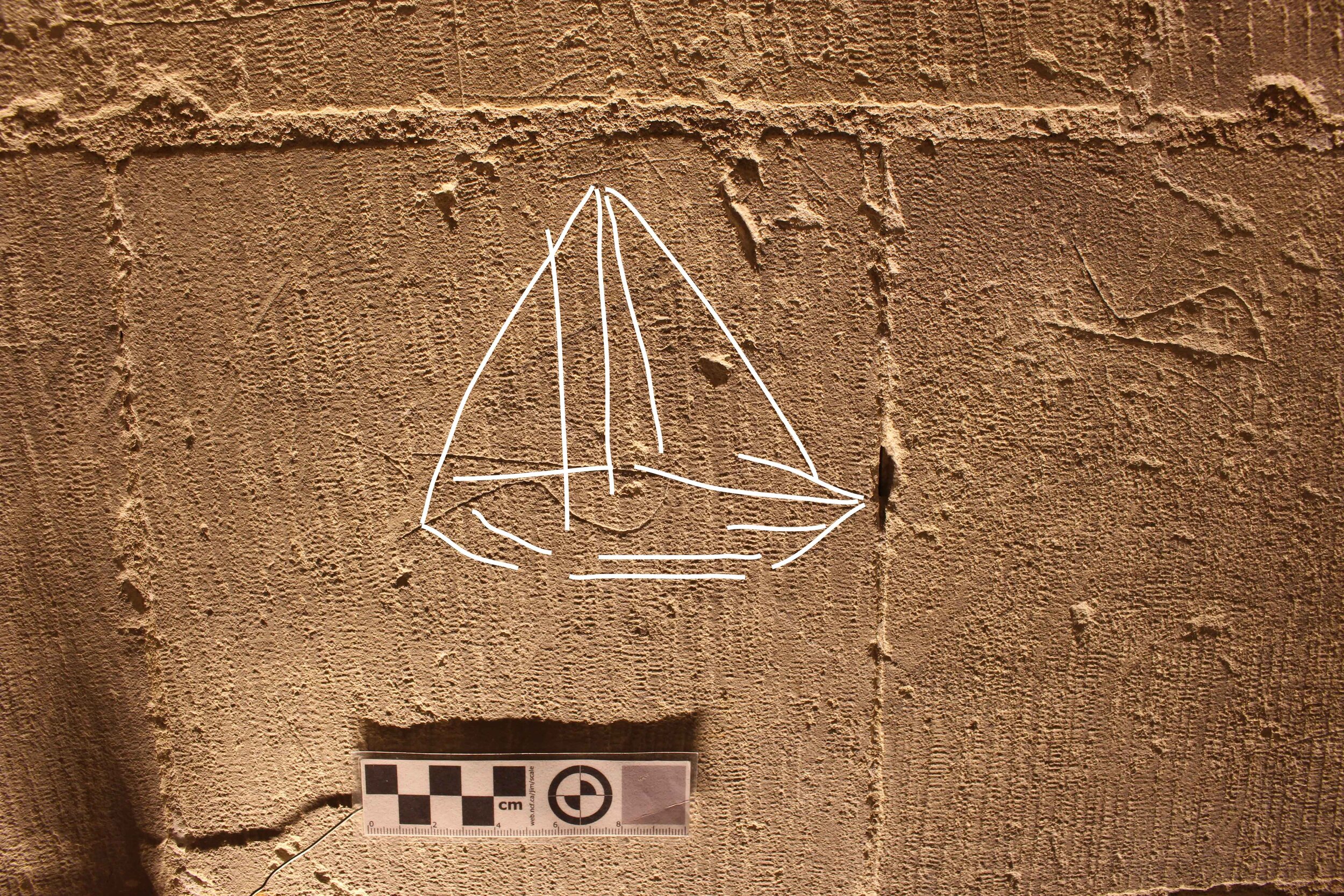
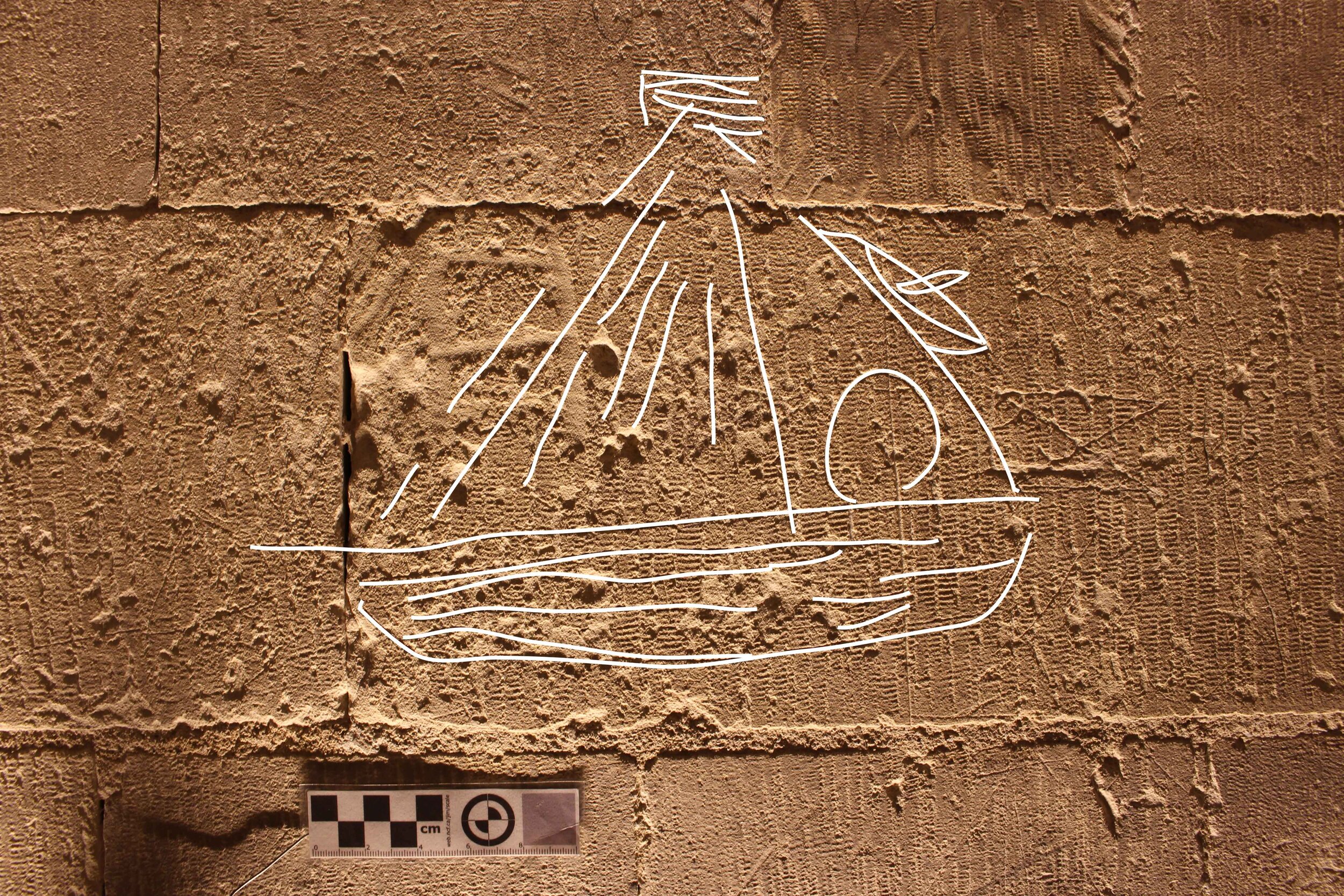
Four ship graffiti occur on the north face of the pier on the north of the entrance to the Ithamar Chapel in the crypt.
A fragmentary but deeply-incised design occurs high on the west wall of the north quire transept, created during a time either when scaffolding gave access to this area or when large box pews filled the quire.
A large ship graffito, with a possible fishing net or mooring, high on the west wall of the north quire transept.
The evolution of wooden furnishings in this area is complex and is deserving of a detailed study. Many invoices survive in the Chapter records and although often vague, detail refurbishing and redecoration campaigns over the Early Modern period before the removal of the last iteration of the pews in the 19th century.
The interpretation of this ship graffiti as ex-voto is important in our interpretation of other forms of graffiti found clustered around medieval altars and shrines. The four ship graffiti in the crypt and one high in the north quire transept provide a challenge to interpretation. The shrine of St William of Perth was located in the north quire transept. Six or seven altars were recorded as existing in the crypt until the reformation (St John Hope 1898, 325-328). Perhaps these graffiti indicate the proximity of a previously unidentified medieval altar or shrine towards the centre of the crypt. A metal fastening in the ceiling of the archway over this bay may have suspended a sanctuary lamp.
The photographic graffiti survey at Rochester Cathedral begun in 2016 has recorded over 7,000 inscriptions from the 12th to the 21st century.





